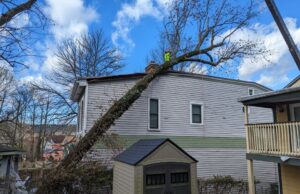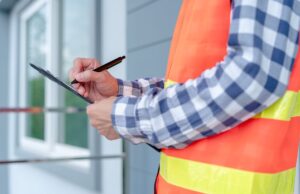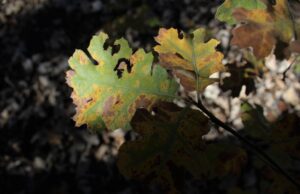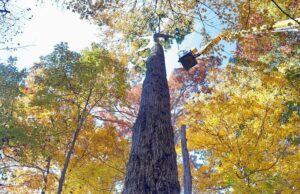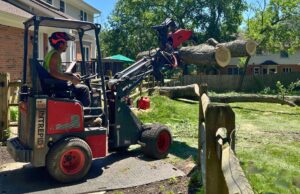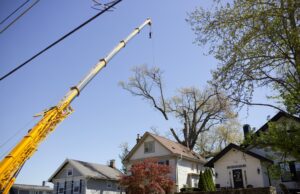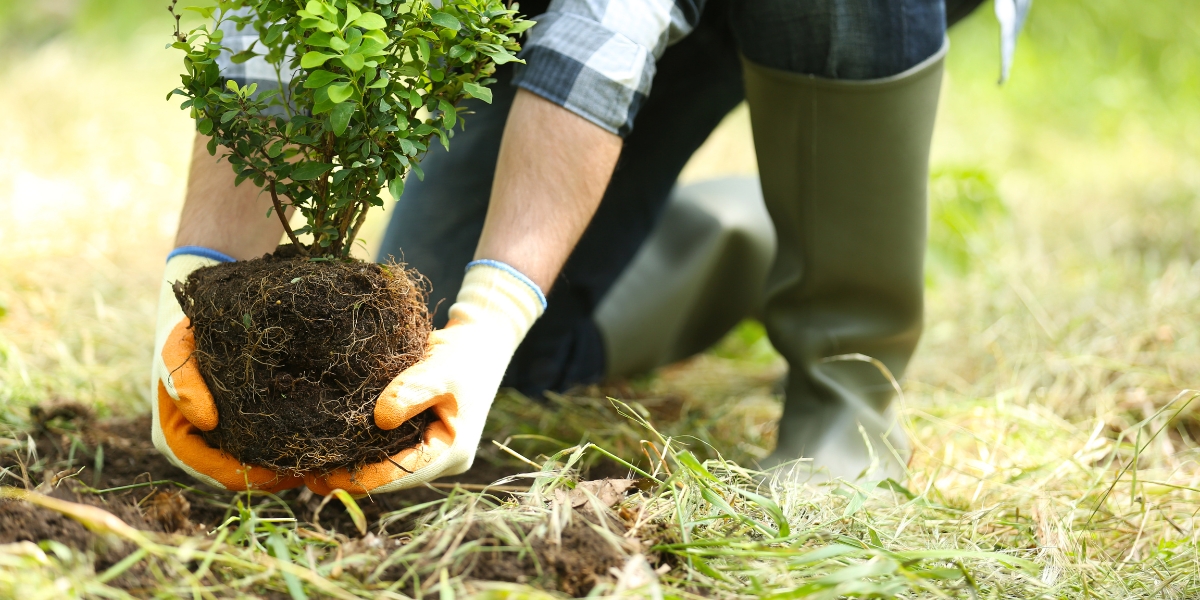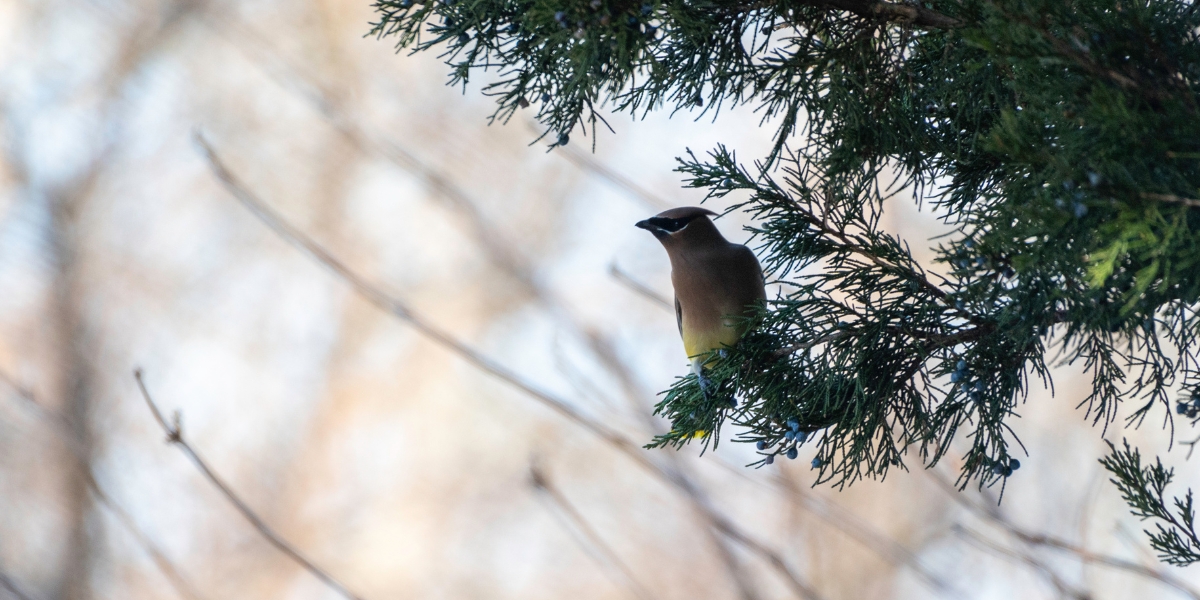Key Takeaways
- Planting The Wrong Tree In The Wrong Place
- What To Consider When Choosing A Tree For Your Yard
- What To Consider When Choosing A Planting Location
- Preparing Your Yard For New Trees
One of the easiest ways to make your home more enjoyable, more beautiful, and more energy-efficient is by planting trees. But when it comes to residential yards in the Cincinnati area, it’s vital to plant the right tree in the right place.
There’s a lot that can go wrong if you end up planting the wrong tree in your yard or plant a tree in the wrong place. It can die, require lots of maintenance, cause damage to your property, or even violate local laws.
Luckily, with our helpful tree selection and planting guide for Cincinnati yards, we make it easy to avoid the common pitfalls and maximize your chances of tree success. Keep reading to ensure you choose the best possible trees and plant them in the ideal location in your yard.
Planting the Wrong Tree in the Wrong Place
Before diving into the tree selection process, let’s highlight a few things that can go wrong if you select inappropriate trees or planting locations.
Here’s what could happen if you choose the wrong trees for you yard:
- Excessive maintenance requirements, like frequent pruning, irrigation installation, or expensive fertilizers, just to keep the tree looking somewhat healthy.
- Overly messy trees dropping lots of ripe fruit, seeds, or twigs, making a mess (and potentially creating a slip hazard) on driveways, sidewalks, and cars (or dropping it all in your pool!).
- Limited biodiversity and increased chances of pest and disease problems because you only planted one tree species. Just think about all of the elm trees killed by Dutch elm disease or ash trees taken out by the emerald ash borer.
- No beneficial wildlife, such as birds, butterflies, pollinators, or small mammals, attracted to your property because the non-native trees planted there don’t support our indigenous wildlife.
And here’s what could happen if you plant a tree in the wrong place in your yard:
- Tree roots growing too close to the home and damaging the foundation.
- Tree roots damaging driveways, sidewalks, and other hardscapes.
- Trees overhanging the home and dropping litter on the roof, shortening the lifespan of your asphalt shingles.
- Falling trees or branches that land on buildings and structures beneath the tree, causing costly damage.
- The need to constantly clear away fruit and leaves from overhanging trees that stain your driveway and make the sidewalk slippery.
- Damage to power and utility lines from large trees that were planted underneath or too close to the wires, leading to potentially dangerous consequences.
- Costly problems with underground utilities and septic systems from trees planted too close.
- Blocked views and not enough sunlight in your or your neighbor’s home and garden.
This list just scratches the surface of potential problems that could be caused by planting the wrong tree in your yard or planting a tree in the wrong location.
What to Consider When Choosing a Tree for Your Cincinnati Yard
The good news is that it’s not that hard to choose the right tree and plant it in the right place. It just takes a little guidance. Here’s what to consider when choosing which trees to plant in your Cincinnati-area yard.
1. Purpose Of the Tree
The first and most important thing to consider when choosing a tree is the purpose of the tree. Why are you planting trees? What is your hope for these trees and the surrounding landscape? Here are a few questions to flesh out the purpose.
To Shade the Yard or House
Want to shade your house in the summer? By planting a large tree on the south or west side of your home, you can shade it from direct sun in the summer, making your house much more comfortable while also saving money on utility bills.
But in our northerly climate, you’ll probably want the sun to hit your house in the winter to warm it up, also saving money on heating bills.
So, planting a deciduous tree would be best, since the leaves will shade your home in the summer, but they’ll drop once the temperatures fall, allowing the sunlight to hit your home in the winter.
Red maples are a popular choice, as they are tall, deciduous, fast-growing, and provide beautiful fall color.
Planting Tree for Fruit
Many homeowners are interested in growing their own fruit so they can provide a healthy, organic source of produce to their family, while also saving a bit of money at the grocery store. Planting fruit trees that thrive in our area can be a worthwhile investment.
Planting Trees to Attract More Birds and Butterflies
Want to see, hear, and experience the beauty of nature without leaving home? By planting trees that attract wildlife, you can enjoy the sound of birds singing in the morning or watch butterflies fluttering throughout your yard in the afternoon sun.
Certain trees are more likely to attract desirable wildlife than others. In general, trees native to our area will support more wildlife than exotic tree species from Asia or Europe. For some good native tree options, see our article describing our suggested native trees to plant in Cincinnati.
If you want more birds in your yard, you’ll want to have both a food source for birds, as well as cover and nesting areas, to encourage birds to stay. Eastern red cedar is a good choice, providing both thick cover and berries for birds.
If you want butterflies, consider planting oaks. Oaks support the most species of butterflies of any tree species in the US. Maples are also a good choice, as are cherries and plums (Prunus spp.). As a benefit, the more butterflies and caterpillars that are found in your yard, the more birds will show up to feed on them.
Planting Trees for Privacy
If you have an ugly view you’d like to block, or if you want to shield your yard from your neighbors, there are certain trees you can plant to increase privacy. Generally, you’ll want to consider evergreen trees, as their dense, compact foliage can create an impenetrable barrier. They also provide year-round privacy, making trees like cedars and spruces a good choice along property lines.
2. Consider The Mature Height and Spread of The Tree
After deciding why you want to plant trees in your yard, one of the next considerations is how tall and wide a tree will eventually grow. Many homeowners make the mistake of planting trees without considering the mature size.
Many trees can eventually reach 80 feet or more in height with a canopy width of 40 feet or more. A tree that size should only be planted in larger yards that have plenty of space – and never planted anywhere near power lines!
If you have a smaller residential yard, try sticking with small to medium sized tree species that max out between 15 and 50 feet tall.
3. Do You Want Deciduous Or Evergreen Trees?
Evergreen trees don’t lose their foliage in the fall so they’re a good choice for year-round privacy along property lines. They also add much needed color and visual appeal during the wintertime when other trees are bare.
Deciduous trees will lose their leaves in the fall. They work best as shade trees – shading your home in the summer yet allowing light to reach your home in the cooler months. If possible, try to incorporate both types of trees in your yard.
4. Plan For the Growth Rate of the Tree
Some trees grow very quickly, like the red maple. Others grow at a snail’s pace. If you want something that can mature quickly and provide shade and beauty in the next few years, choose a fast-growing tree species.
On the other hand, if you want a lower maintenance tree that will need less pruning over the years, consider planting a slow grower.
5. Understand The Growing Requirements of The Tree
Every species of tree has unique requirements for sunlight, water, and soil type. You should evaluate the type of soil you have in your yard before deciding which trees to plant. The Hamilton County Conservation District partners with PennState Extension to provide soil testing services to Cincinnati area residents for only $10 – a small investment that brings a huge return.
Also take a close look at the amount of sunlight your yard gets over the course of the year, as well as how much water would be available to the tree through normal rainfall (the Cincinnati area averages about 42 inches of rain per year but there are local variations) and irrigation. These environmental factors will determine which species will thrive in your yard, and which won’t survive.
6. Some Trees Are Messier Than Others
Some trees can create quite a mess, dropping leaves year-round, as well as fruit, seeds, and pollen. If you’ve ever seen your car or deck coated in a fine yellow powder in spring, you know how much pollen just one pine tree can produce!
While these trees can be beautiful and beneficial, they are best planted away from driveways, sidewalks, hardscapes, and your lawn. Plant them toward the rear of your yard where the mess can be left to decompose into the soil. That way, you don’t need to clean up after your trees every week.
7. Know Your Hardiness Zone
There are an estimated 73,000 tree species worldwide. Only a small fraction can grow in our climate.
The easiest way to determine if a tree can grow in your area is by looking at your hardiness zone. Our zone here in Cincinnati 6b. When you research trees online,
or visit nurseries, always check to see if that species is designed for your zone, or you’ll end up wasting money when your tree dies from winter cold or withers in our summer heat.
8. Consider Tree Maintenance
Many homeowners think that after they plant trees in their yard, their trees will thrive without any further involvement. Unfortunately, that couldn’t be farther from the truth. Trees require ongoing care and maintenance to help them thrive, remain healthy, and grow safely.
Ongoing care involves periodic pruning of problematic branches and shoots, watering, fertilizing, pest and disease control, and more. However, some trees generally require less care than others. If maintenance is a concern, consider planting trees that are native to our area as they typically don’t need as much attention.
9. Incorporate Multiple Tree Species
Lastly, when choosing which tree species to plant in your yard, consider plant diversity. Don’t plant too much of the same tree species. A diverse selection tends to add more visual interest to your yard, can support more species of wildlife, and will be less susceptible to pest and disease problems.
What to Consider When Choosing a Planting Location
After deciding on the size and species of trees you’d like to plant in your yard, you’ll need to find the ideal planting location for each one. Here are a few key factors to consider when choosing a tree planting site.
1. Keep Trees Away from Powerlines
Like it or not, power lines dictate what you can plant and where. Avoid planting large trees within 35 feet of power lines. This will save a lot of heartache in the future, for you or future homeowners. Stick to trees that grow no more than 20 feet tall when planting under or near power lines.
2. Avoid Underground Utilities
Your yard has various utility lines running underground, such as water and sewage pipes. Contact OHIO811 when planning your planting project. They will mark your utility lines for you to ensure you don’t inadvertently damage existing lines or plant your tree too close to them. Keep large trees well clear from utility lines, as roots can eventually cause costly damage (particularly to water-carrying pipes) and may lead to premature tree removal.
3. Don’t Plant Large Trees too Close to Your Home
It’s tempting to plant large trees close to the home, either to increase curb appeal or provide immediate shade. But large trees should ideally be kept 35 feet from your home. During severe weather, you don’t want a large tree branch, or even an entire tree falling onto your home. You also don’t want to risk damage to your foundation or basement as tree roots work their way into small cracks or beneath walls.
4. Carefully Consider Planting Near the Street, Sidewalk, Or Driveway
Trees are notorious for uplifting sidewalks, driveways, and even portions of public roadways. Larger trees should be kept a safe distance away from these to avoid unnecessary damage.
In Cincinnati, the city’s tree ordinance says that any tree on private or public property that obstructs a street or sidewalk or suffers from an infectious disease or insect infestation is considered a public nuisance. As the property owner, you will be held responsible for correcting whatever the issue is within 14 days of receiving notice from the city. If you’re not willing or able to regularly maintain trees planted near streets or sidewalks, it’s best to avoid planting there in the first place.
5. Discuss Your Planting Plans with Your Neighbors
When planning the locations for your new trees, it may be a good idea to speak with your neighbors. Even though it’s your yard, new trees may affect how they enjoy their yard, either by blocking a view or by creating excessive shade their garden.
It’s best to have these discussions with neighbors before you plant, rather than waiting for a problem to arise afterward.
Lefke Tree Experts Can Prepare Your Yard for New Trees
If your current yard is devoid of any existing trees, then preparing your planting site should be pretty easy. Just don’t forget to call OHIO811 to mark out utility lines before digging any holes!
But what if you have existing trees that you’d like to replace? In that situation, you’ll first need to remove the existing trees and grind down the tree stumps. Tree removal, for both small or large trees, is difficult and dangerous (particularly in confined spaces). Leave the work to professionals, like the certified arborists at Lefke Tree Experts, to save yourself from injury or damage to your property. Call us today at 513-325-1783 or request a free estimate using our simple online form. We can also provide guidance on selecting new tree species and planting locations for your yard.

